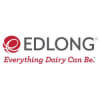As the pandemic forced millions of Americans to spend more time at home, few segments of the CPG space were able to benefit more than coffee as caffeine-starved consumers showed an unwillingness to forgo their morning cup of joe.
People who once got their caffeine on the way to work or while running errands started upgrading their home coffee platform to more closely replicate the upscale experiences they enjoyed in cafes.
Now, coffee makers such as Nestlé, which owns the fast-growing Nespresso line, are optimistic that the last several months of home brewing instilled a new routine for many people that will keep them as regular users post COVID-19.
“It has really never been a better time for Nespresso when you look at post pandemic,” said Alfonso Gonzalez Loeschen, CEO of Nespresso North America, whose brand has been among the biggest beneficiaries in the acceleration of do-it-yourself coffee making.

Nespresso is benefiting not only from an acceleration in the demand for single-serve beverages, but also through the brand's reputation as a premium offering that can create cafe-quality coffees, espressos and other caffeinated drinks at home with the touch of a button, he said. Americans have shown a willingness to splurge and treat themselves across the broader consumer goods landscape, and food and beverages have been no exception.
Nespresso also has a strong e-commerce operation, with more than half of its sales coming from the channel, and the shift by consumers online during the pandemic further played into the brand's strength.
"We have seen … a constant market share gain year after year, including during the pandemic," Gonzalez Loeschen said. "We were well placed, right in the middle, to really, really capitalize on" these trends.
The Nespresso coffee system, with its brewing machine and aluminum-based capsules, was growing low double-digits before the pandemic — a rate that accelerated to the "high-double digits" during the outbreak, he said.
Nestlé, which placed a big bet on coffee a few years ago through a series of acquisitions and a deal with Starbucks to sell its branded products, said in April the category was its largest contributor to growth during the first quarter.

Sales of Nespresso products, which include the machines and coffee pods, were especially strong during the period with sales rising 17.1%. In March, Nestlé, the world's largest packaged food company, said it would invest 117 million Swiss francs ($127 million) to increase production and distribution for Nespresso in Switzerland to meet growing global demand.
Near-term priorities
Nespresso took its fair share of lumps during the pandemic. With many consumers working from home instead of in the office, its business-to-business segment suffered. It also closed its retail stores as a preventive safety measure at the beginning of the pandemic. With business siphoned away from these channels, the brand became more reliant on e-commerce to reach consumers, Gonzalez Loeschen said.
The brand, which was created by Nestlé in 1986 before debuting in the U.S. four years later, differentiates itself through its premium beverages and customer service. Employees provide recommendations on coffees, machines and opportunities to recycle, Gonzalez Loeschen said. In addition, the retail sites allow the brand to have a physical presence where consumers can receive personalized service, taste the product and learn about replicating the experience at home.
Nespresso has largely catered to the hot coffee crowd when they brew a cup on their machine at home. But a growing number of consumers are drinking their coffee cold, and Nespresso has admittedly been slow to catch up. The cold brew market is forecast at $370 million in 2021, according to Statista, compared to $110 million just six years ago. In 2025, the segment is forecast to reach nearly $1 billion in yearly revenue.
"We need to get better at that and this is one of our priorities," Gonzalez Loeschen said. "At the end of the day, it’s not about do we have our fair share or not; it’s more important this is where the trends are, and this is the way our consumers are drinking coffee."
In an effort to enter the cold brew category, Nespresso currently offers Barista Creations, coffees designed to be enjoyed with ice. The brand will continue to innovate and create unique cold coffee experiences in the future. At the same time, Nestlé's efforts to keep the Nespresso brand fresh and in tune with ongoing trends also includes actively exploring coffees with functional attributes. Gonzalez Loeschen noted that coffee with energy would be "a natural place to go."
Another fast-growing category in coffee is ready to drink. The segment has nearly doubled sales from four years ago to $2.6 billion for the 52 weeks ending Jan. 2, 2021, according to Nielsen, with revenue up 17.2% from the prior year. Nestlé has a dominant presence in RTD coffees through its majority stake or full ownership of brands such as Blue Bottle and Chameleon Cold Brew, and complementary brands like Coffee-mate creamers. Nespresso could eventually decide to enter the RTD space, but for now, it's not a near-term priority.
"I will never say 'never' to any opportunities, but our focus today is really on expanding in our current solution and our current system, our cold coffee portfolio and our offerings in order to be able to have the best solutions, whether it’s at home" or in the office, Gonzalez Loeschen said.






















